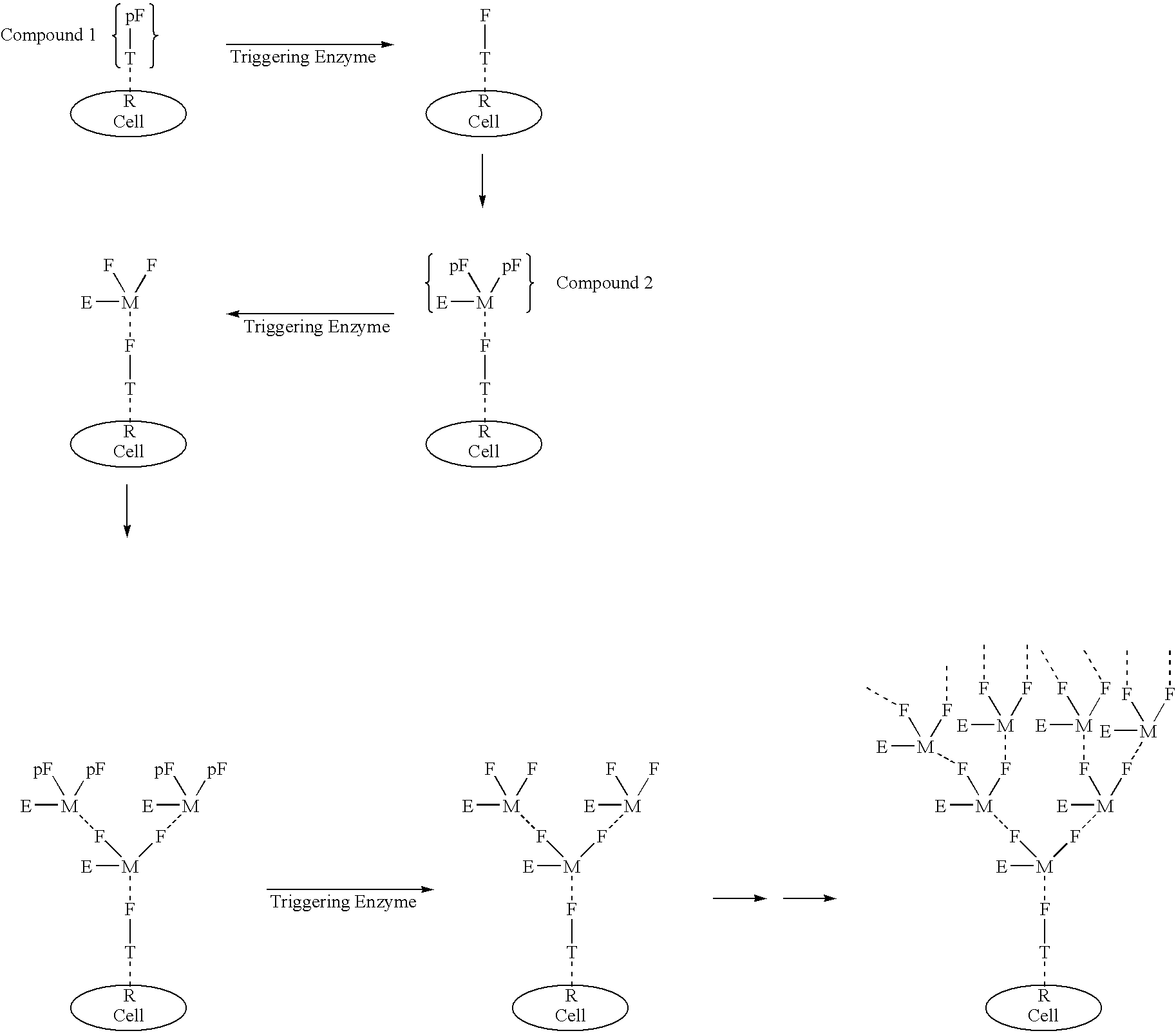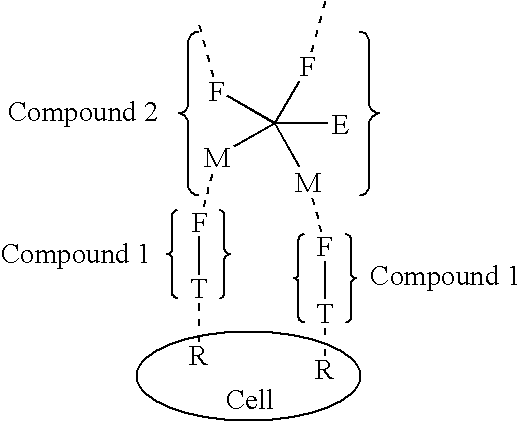Exponential pattern recognition based cellular targeting compositions, methods and anticancer applications
a cellular targeting and pattern recognition technology, applied in the direction of antibody medical ingredients, peptide sources, therapy, etc., can solve the problem of amplification of the quantity of specific delivery of prodrug to the target site, and achieve the effect of amplification of the quantity
- Summary
- Abstract
- Description
- Claims
- Application Information
AI Technical Summary
Benefits of technology
Problems solved by technology
Method used
Image
Examples
example 1
Compound 1 is an example of a Compound 1 type molecule. The compound has targeting ligands that can bind with high affinity to prostate specific membrane antigen (PSMA) and to sigma receptors. Both of these targets are highly overexpressed on the surface of prostate cancer cells. In addition the compound has a masked female adaptor comprised of a trimer of lys-d-Ala-d-Ala, that can be unmasked by plasmin. Activated plasmin is present on the surface of tumor cells. When unmasked the d-Ala-d-Ala trimer can bind essentially irreversibly (with Kd of approximately 10ˆ-17M.) to a trimer of vancomycin a on Compound 2 of the structure shown in Example 2.
example 2
Example 2 is a compound that can deliver in conjunction with Compound 1 the cytotoxic agent indanocine to prostate cancer cells that express the targeting pattern comprised of PSMA and sigma receptors and plasmin. The compound has indanocine coupled by an intracellular trigger that can be activated preferentially inside cells upon conversion of the disulfide to a thiol group. Compound 2 has a trimer of vacomycin attached to the linker system. This trimer can bind to the d-Ala-d-ala trimer on a molecule of Compound 1 on the tumor cell surface. Tumor associated plasmin can than unmask the protected d-Ala-d-ala groups of Compound 2. These unmasked groups can in turn bind to 2 additional molecules of Compound 2. Repetition of this process can lead to an exponential increase in the quantity of Compound 2 bound to the tumor surface. The complex can eventually be internalized by receptor mediated endocytosis. whereupon the indanocine can be liberated and kill the tumor cell.
and wherein...
example 3
Compound 3 is similar to Compound 1 but also has an ouabain group to anchor the complex to the Na / K ATPase and thereby retard endocytosis allowing increased time for amplification to occur.
PUM
| Property | Measurement | Unit |
|---|---|---|
| radius | aaaaa | aaaaa |
| structure | aaaaa | aaaaa |
| chemical | aaaaa | aaaaa |
Abstract
Description
Claims
Application Information
 Login to View More
Login to View More - R&D
- Intellectual Property
- Life Sciences
- Materials
- Tech Scout
- Unparalleled Data Quality
- Higher Quality Content
- 60% Fewer Hallucinations
Browse by: Latest US Patents, China's latest patents, Technical Efficacy Thesaurus, Application Domain, Technology Topic, Popular Technical Reports.
© 2025 PatSnap. All rights reserved.Legal|Privacy policy|Modern Slavery Act Transparency Statement|Sitemap|About US| Contact US: help@patsnap.com



